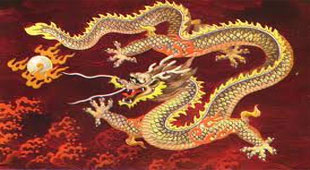Already largely holding on to its informal title of “factory to the world.” China is making a big push, including much lower prices in many product categories, to increasing exports further – raising objections and trade-related action from a number of countries.
Supply Chain Digest Says... |
 |
|
| Brad Setser, a scholar at the Council on Foreign Relations, told the Journal, added that “Any meaningful expansion of Chinese exports beyond current levels will crush production elsewhere.” |
|
 |
|
What do you say? |
|
| Click here to send us your comments |
|
| |
|
| Click here to see reader feedback |
|
|
|
Many readers will probably be surprised to know that in a period of still strong inflation, China’s export prices are on average down 20% in 2023, according to estimates made recently by investment bank ABN AMRO.
According to an article on this trend this weekend by the Wall Street Journal.,
while some of that drop in prices reflects easing supply chain bottlenecks, it is also a sign that Chinese sellers are discounting to preserve or expand market share during a period of weaker global demand.”
The reality is that in its currently wobbly economy, China has overcapacity in many sectors, and is using many levers, including price, to fill its factories up.
Accord to the Wall Street Journal piece, local governments in China have also been subsidizing trips abroad for companies to sell more overseas, including chartering flights for them. The federal government has also pressed financial institutions to direct credit to the manufacturing sector.
Aiding China’s push is the fall of its yuan currency, which is at is lowest level against the US dollar in 15 year. A falling yuan makes goods from China less expensive if the purchase is made in dollars. Today, one dollar can buy about 7.2 yuan, up from around 6.3 at the end of March.
A number of countries have taken action of various types to protect their manufacturers from the new Chinese export push, according to the Wall Street Journal.
For example, the US recently announced levies on tin-plate metal products from China and two other countries, after determining that their steelmakers were selling at unfairly low prices.
What’s more, India is investigating whether China dumped a range of goods, from chemicals to furniture parts, into the country at unfair prices.
(See More Below)
|
CATEGORY SPONSOR: SOFTEON |
|
|
|
|
|
 But, the Journal says, tensions are most acute in Europe, where European Union regulators in September launched an antisubsidy probe over concern that China is flooding the Euro zone with low-cost electric vehicles. But, the Journal says, tensions are most acute in Europe, where European Union regulators in September launched an antisubsidy probe over concern that China is flooding the Euro zone with low-cost electric vehicles.
Though impacted by seasonal factors, the US trade deficit in goods with China was $28.4 billion in September, according to the most recent numbers from the Census Bureau. That’s up substantially from just $16.6 billion in March.
The economic impact of all this could be significant.
“With a weakening economy, China naturally looks for exports,” Brad Setser, a scholar at the Council on Foreign Relations, told the Journal, adding that “But any meaningful expansion of Chinese exports beyond current levels will crush production elsewhere.”
Automobiles, solar panels and steel are among the areas that worry officials and others in terms of China’s efforts to take share – using price as needed.
China’s steel export prices have dropped almost 60% versus 2022 - its steel export volume went up 53% in October compared with last year, according to Frederic Neumann, chief Asia economist at HSBC, a bank.
“The rest of the world may not be able to absorb more Chinese exports,” Adam Wolfe, emerging-markets economist at London-based Absolute Strategy Research, told the Journal.
What are your thoughts on China's new export push? Let us know your thoughts at the Feedback section below.
Your Comments/Feedback
|

